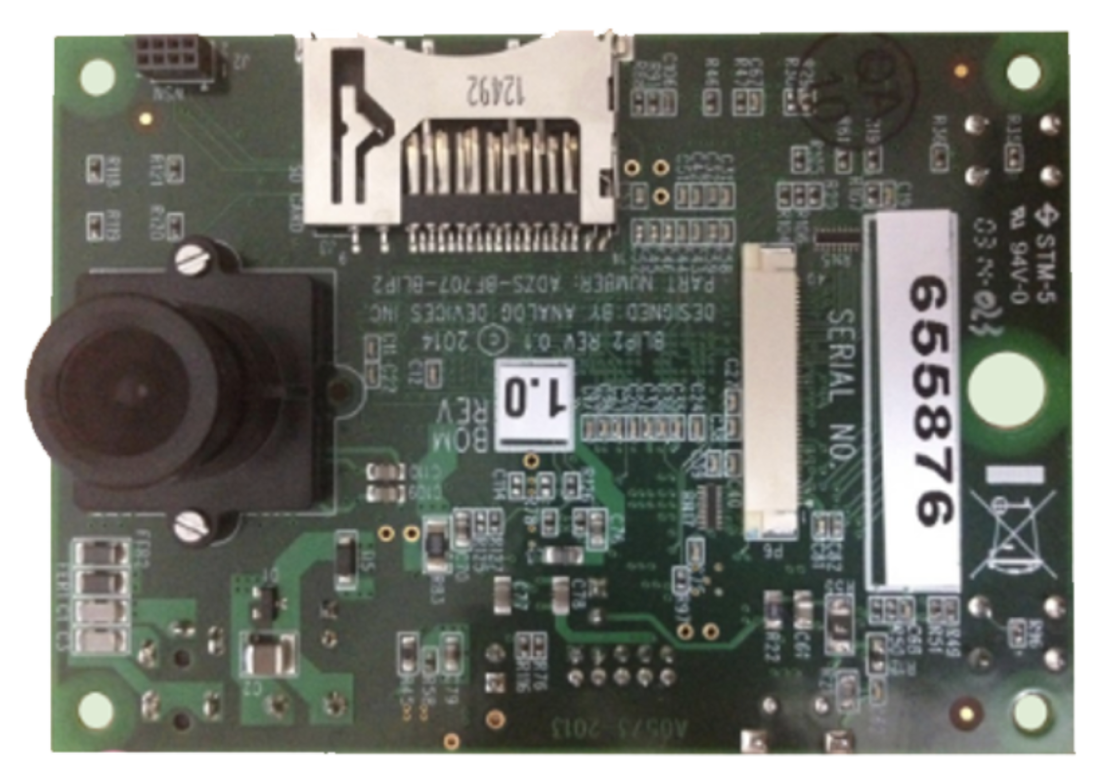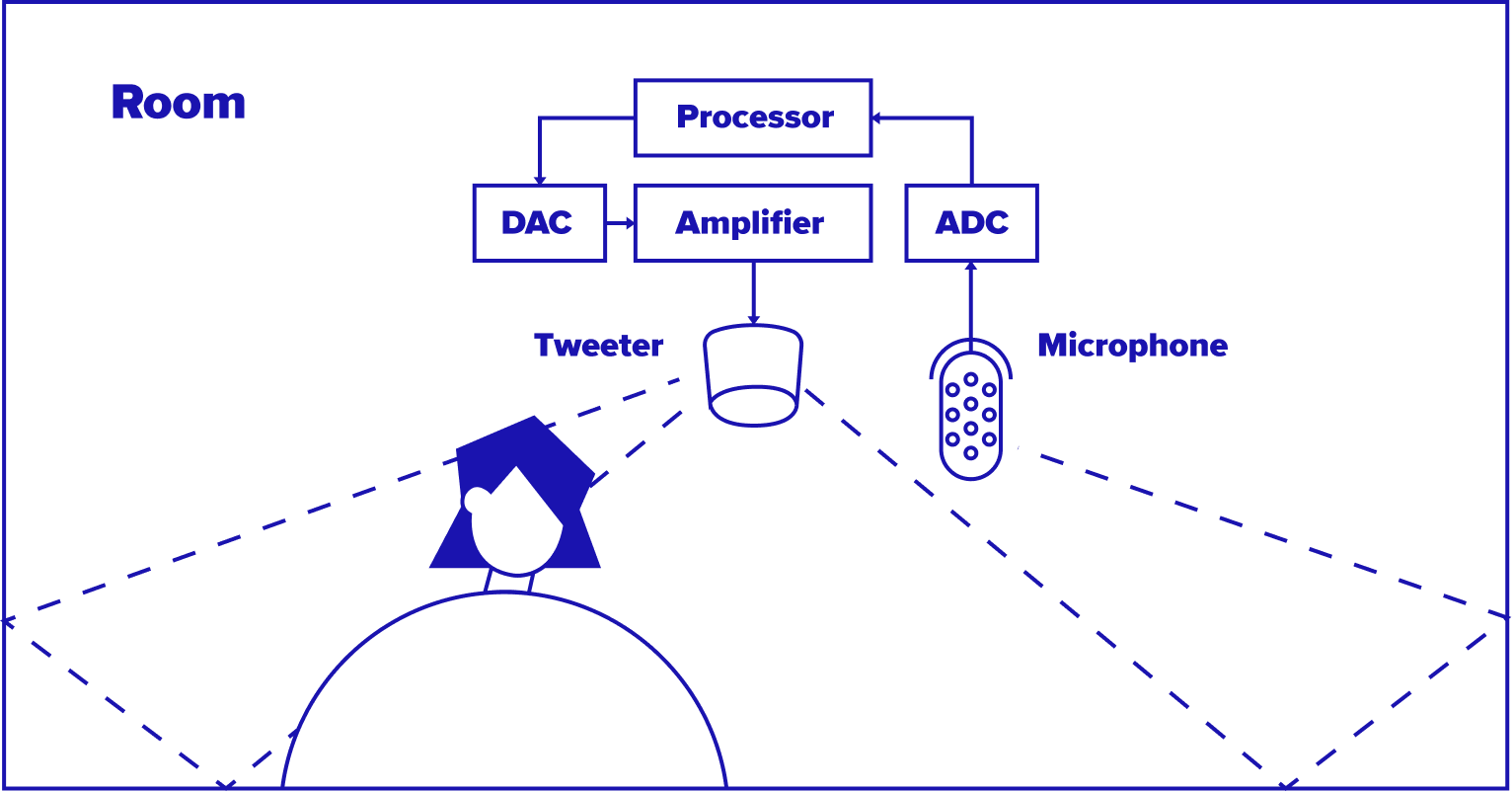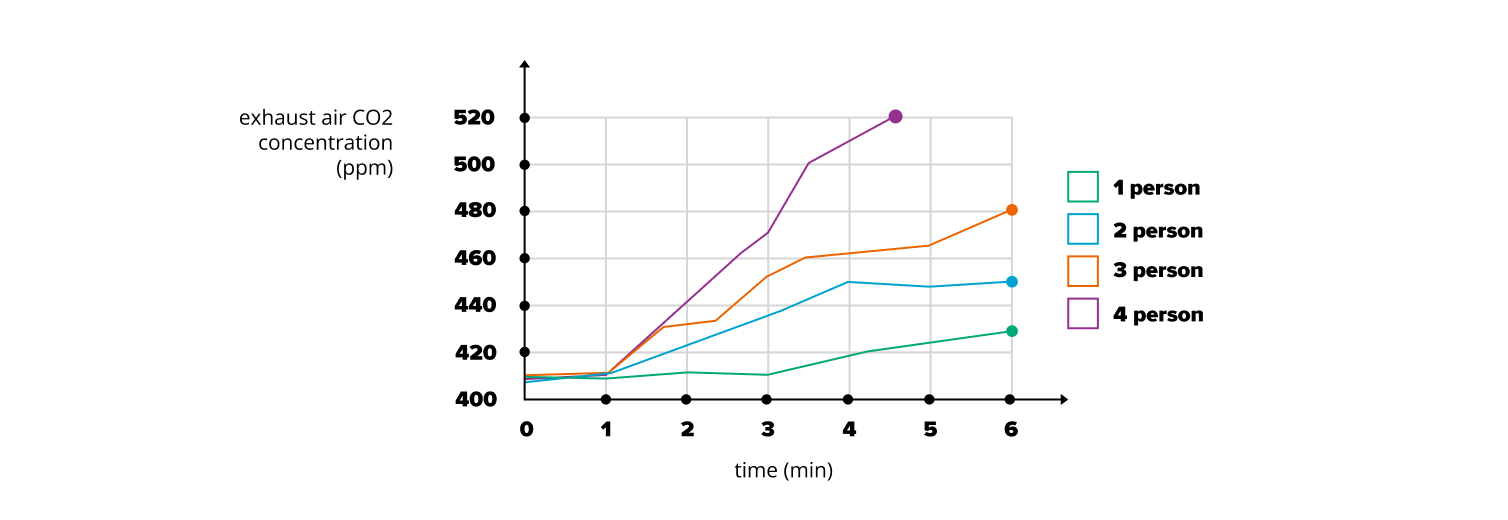
How Occupancy Detection Works: Methods, Benefits, and Challenges
Smart cities, buildings, and other intelligent systems rely on understanding human presence — who is there, when, and how many people are in a space. This kind of human sensing is called occupancy detection. It identifies the presence and number of people in a space, enabling smarter energy use, security, and operational decisions.
For example, buildings use it to adjust lighting, heating, and air conditioning based on real-time occupancy. In retail, it helps track customer flow, analyze peak hours, and optimize store layouts. Security systems also rely on occupancy detection to identify unauthorized access or unusual activity. These applications have contributed to the rapid growth of the occupancy sensor market, which is projected to reach USD 5.20 billion by 2030, up from USD 2.75 billion in 2024.
There are several ways to detect occupancy, broadly divided into direct and ambient occupancy detection methods. Direct methods, such as body-worn sensors and smart devices, require people to carry or interact with specific technology. In contrast, ambient solutions rely on environmental sensors — video cameras, infrared detectors, ultrasonic waves, Wi-Fi signals, and even CO₂ levels — to estimate the number of people in a space. However, these methods can be affected by obstacles, lighting conditions, or signal interference. To improve accuracy, AI/ML refine raw sensor data, filtering out noise and improving reliability in complex environments.
VIDEO CAMERAS
Video cameras are a widely used tool for occupancy detection, especially when paired with AI and computer vision. The cameras capture real-time footage, which is then processed by AI algorithms to detect movement, count people, and analyze behavior patterns.
AI-powered occupancy tracking using video cameras is applied in various settings. In offices, cameras monitor room occupancy. In parking lots, they count cars. Shopping malls and transport hubs use them for crowd management. They’re also integrated into security systems.
Pros:
- Benefit from advancements in image and video processing
- HD cameras are becoming more affordable
- Can provide additional security and analytics beyond smart building occupancy monitoring and detection
Cons:
- Performance depends on lighting conditions
- People may change their behavior when they know they're being recorded
- Raises privacy-preserving occupancy-concerns, as cameras can be used for identification

INFRARED (IR) CAMERAS (PYROMETERS)
Infrared (IR) cameras have an advantage over traditional color cameras, especially when privacy is a priority. Instead of capturing visual images, IR cameras detect heat emitted by warm objects, like people, within their view. This makes it hard to identify individuals from the thermal feed, even if the video is compromised.
IR cameras are commonly used in office spaces to monitor occupancy and control lighting and HVAC systems based on the number of people in a room. In hospitals, they track patient movement while maintaining privacy. They're also ideal for security, detecting movement in low-light or dark environments where RGB cameras fall short.
Pros:
- Do not depend on lighting conditions
- Allow tracking of individuals’ temperature
- Less privacy invasion compared to RGB cameras
Cons:
- Generally, more expensive than RGB cameras
- Limited in their ability to provide detailed environmental information
PASSIVE INFRARED (PIR) SENSORS
Passive infrared (PIR) sensors detect occupancy by sensing changes in infrared radiation emitted by human bodies. When a person moves within the sensor’s range, it detects the shift in infrared radiation and signals that someone is present. This is known as binary occupancy data, which indicates whether a space is occupied or unoccupied.
This human sensing technology is typically deployed in office spaces, warehouses, and homes to control lighting. It’s also found in security systems, where it alerts movement in protected areas.
Pros:
- Affordable, compact, and energy-efficient
- Provide binary occupancy data, making them ideal for privacy-sensitive environments
Cons:
- Require a direct line of sight, so they can’t detect people hidden behind objects
- Won’t detect motion if the person remains still
- Can be affected by thermal currents from things like hot beverages or HVAC systems
- Can't offer detailed information like room usage or behavior patterns
ARRAY OF INFRARED SENSORS
An array of infrared sensors works by placing multiple sensors to detect temperature changes. This setup allows tracking occupancy levels and recognizing activity patterns based on heat signatures. For example, infrared sensors can be placed at doorways to track how many people enter or exit a room.
These occupancy tracking systems are commonly deployed in office buildings for people monitoring, in smart homes for energy management, and public areas like airports or shopping centers for crowd management.
Pros:
- Can detect temperature patterns and estimate occupancy
- Doesn't require additional training for setup, as it works out-of-the-box
Cons:
- Challenges in counting multiple people entering through the same door simultaneously
- Can be error-prone if the distance between sensors is too large
- May struggle with detecting people who remain still or move slowly
BREAK-BEAM SENSORS
Break-beam sensors consist of two components: a transmitter that emits an infrared beam and a receiver that detects it. When the beam is interrupted — for example, when a person walks through it — the sensor registers the event.
These sensors are commonly used for entry and exit monitoring. They track elevator occupancy and monitor turnstiles or security gates, noting movement and direction. In retail, they manage checkout queues. Break-beam sensors also control lighting by detecting movement in rooms or corridors and assist in parking systems by tracking vehicle availability.
Pros:
- One of the most affordable options available
- Detects movement and the direction of motion
Cons:
- Don’t count the exact quantity of people simultaneously entering the room
- Performance can be affected by long distances between the transmitter and receiver
- Needs to be mounted 120-140 mm from the ground for optimal performance, limiting flexibility in installation
ULTRASONIC SENSORS
Ultrasonic sensors emit ultrasonic sound waves, which bounce off objects, including human bodies. These reflected sound waves are detected by a receiver, allowing the system to identify and count people.
The technology is quite popular for its non-intrusive nature and ease of installation. These occupancy detection sensors are commonly used in offices for occupancy monitoring, public restrooms for light control, and smart buildings for HVAC management. They’re also employed in industrial settings to detect motion in automated systems.

Pros:
- Silent and safe for humans, as ultrasonic waves do not pose any risk
Cons:
- Their high-frequency sound waves, while inaudible to humans, can be heard by pets and may cause discomfort
- Larger rooms may result in higher error rates as sound waves are reflected differently across different spaces
- Requires calibration before use to ensure accurate detection
Accuracy by room size:
| Room size | Max capacity | Average error | Error/Max capacity (%) |
|---|---|---|---|
| Small room | 8 | 0.61 | 7.6 |
| Medium room | 30 | 1.6 | 5.3 |
| Large room | 150 | 2.6 | 1.7 |
ULTRA-WIDEBAND (UWB) RADARS
Ultra-wideband (UWB) radars operate by emitting radio waves and analyzing the reflected signals, using advanced digital signal processing and machine learning to detect human presence.
These sensors are gaining traction in self-driving cars. They also power smart home automation, adjusting lighting or security systems based on movement. In healthcare, they monitor patient movement and detect falls. In parking systems, they track vehicle presence.
UWB radar occupancy detection offers high precision in motion sensing and localization.
Pros:
- Affordable compared to other advanced sensing technologies
- Compact size, making them suitable for easy integration into small spaces
- High precision in detecting and tracking human presence
Cons:
- Can interfere with Wi-Fi, Bluetooth, ZigBee, and other devices
- Require careful installation and calibration to avoid interference issues and ensure optimal performance
Wi-FI
Wi-Fi sensing uses existing Wi-Fi infrastructure in buildings for occupancy detection. Unlike traditional methods, it doesn’t require additional hardware beyond the Wi-Fi network. It works in two ways:
- Terminal-based: The radio frequency (RF) signal from user devices (smartphones, laptops, etc.) is analyzed for movement and presence.
- Non-terminal-based: This method doesn't rely on user devices but instead uses at least two Wi-Fi devices — such as a router and a laptop — where one acts as the transmitter and the other as the receiver.
Early Wi-Fi sensing relied on measuring signal strength (RSSI), but newer methods use channel state information (CSI). CSI provides more detailed data, allowing the system to track movement more accurately by using both angle of arrival (AoA) and time of flight (ToF) techniques across multiple signal frequencies.
Wi-Fi sensing is used in smart buildings to detect occupancy, making use of existing Wi-Fi networks to track movement and room usage. It also automates smart home actions, like adjusting lights or security.
Pros:
- Uses existing Wi-Fi networks, reducing the need for additional infrastructure
- Machine learning and AI methods enable more accurate data analysis
Cons:
- Requires high-performance hardware to process complex AI/ML algorithms
- The quality and density of the Wi-Fi network in the building may influence the effectiveness
ACOUSTIC SENSORS
Microphones capture sounds in a room, which can be analyzed to estimate the number of people present. By placing an array of directed microphones, it’s also possible to track the source of the noise. Speech recognition and noise classification techniques improve the accuracy of this detection. The Ubicoustics project is an example of how microphones can be used in occupancy sensing.
Acoustic occupancy detection works well in meeting rooms or conference spaces. Microphones are often used to identify occupancy based on background noise. They’re also found in smart homes, where sound detection triggers actions like lighting or HVAC control. In public spaces, such as libraries or theaters, they monitor crowd density or changes in activity.
Pros:
- Many devices already have microphones built-in
Cons:
- Data analysis could raise privacy concerns, as it may be seen as eavesdropping
CAPACITIVE SENSORS
Capacitive sensors use electromagnetic fields to detect changes in the environment. By converting walls or entire rooms into sensors, these systems can detect the presence of people by measuring variations in the electromagnetic field caused by their proximity. Project Wall++ is a great demonstration of the possibilities and capabilities of sensors. Find more information by watching this video.
Capacitance sensors are commonly used in smart buildings to monitor room occupancy and automate lighting, HVAC, and security systems.
Pros:
- Almost any room can be converted into a sensor by merely repainting the walls
- Detects the presence of individuals without the need for direct line-of-sight or physical sensors
Cons:
- The system is more effective when people are close to the wall or carrying electronic devices
CO2 SENSORS
As people breathe, CO2 levels rise, and this data is processed to determine the number of people in the room. Research has shown that while CO2 sensors can detect changes, they take some time to provide accurate results. More advanced algorithms can improve the estimation.

CO2 sensors occupancy analysis is widely used in energy-efficient buildings to manage ventilation based on occupancy. It also helps optimize HVAC systems in commercial spaces by adjusting airflow according to the number of people in the room.
Pros:
- Integrated into modern HVAC systems, allowing for easy reuse
- Useful for monitoring air quality and occupancy simultaneously
Cons:
- Delayed response (around 1-2 minutes) for accurate results
SMART METERS
Smart meters detect occupancy by monitoring changes in electricity usage patterns. When people are present in a home or building, their interaction with electrical devices — like turning on lights, using appliances, or charging devices — creates a noticeable shift in energy consumption. This data can then be used to infer whether the space is occupied.
Pros:
- Existing meter infrastructure can be reused
- Can help reduce energy waste by adjusting systems based on occupancy
Cons:
- Not effective when people aren't using electricity or devices
- May not work well in spaces with minimal energy consumption or buildings with constant usage
PRESSURE SENSORS
Pressure sensors embedded in the floor are an effective method for occupancy detection. By placing several sensors near the door, you can track people’s movement throughout the room. Pairing these sensors even detects movement direction, especially when combined with break-beam sensors.
Pressure sensors can be used in retail spaces to monitor customer traffic and improve store layouts, in offices to manage room occupancy and optimize energy usage, and in security systems to track movements in restricted areas or during critical events.
Pros:
- Inexpensive and reliable
- Widely tested in digital weighing scales
Cons:
- Requires modifications to the floor and additional wiring (or a wireless solution) for sensor connections
FINAL WORDS
There are multiple options for occupancy detection and automated people counting, each with its advantages and challenges. Some work better in certain situations, while others are less effective. The key is to choose the best solution based on the specific needs and resources available.
At SoftServe, our R&D team stays up to date with the latest technologies to help identify the right solutions for your business. We can help you optimize your occupancy detection systems and accelerate your digital initiatives. Contact us for a consultation.
Start a conversation with us
